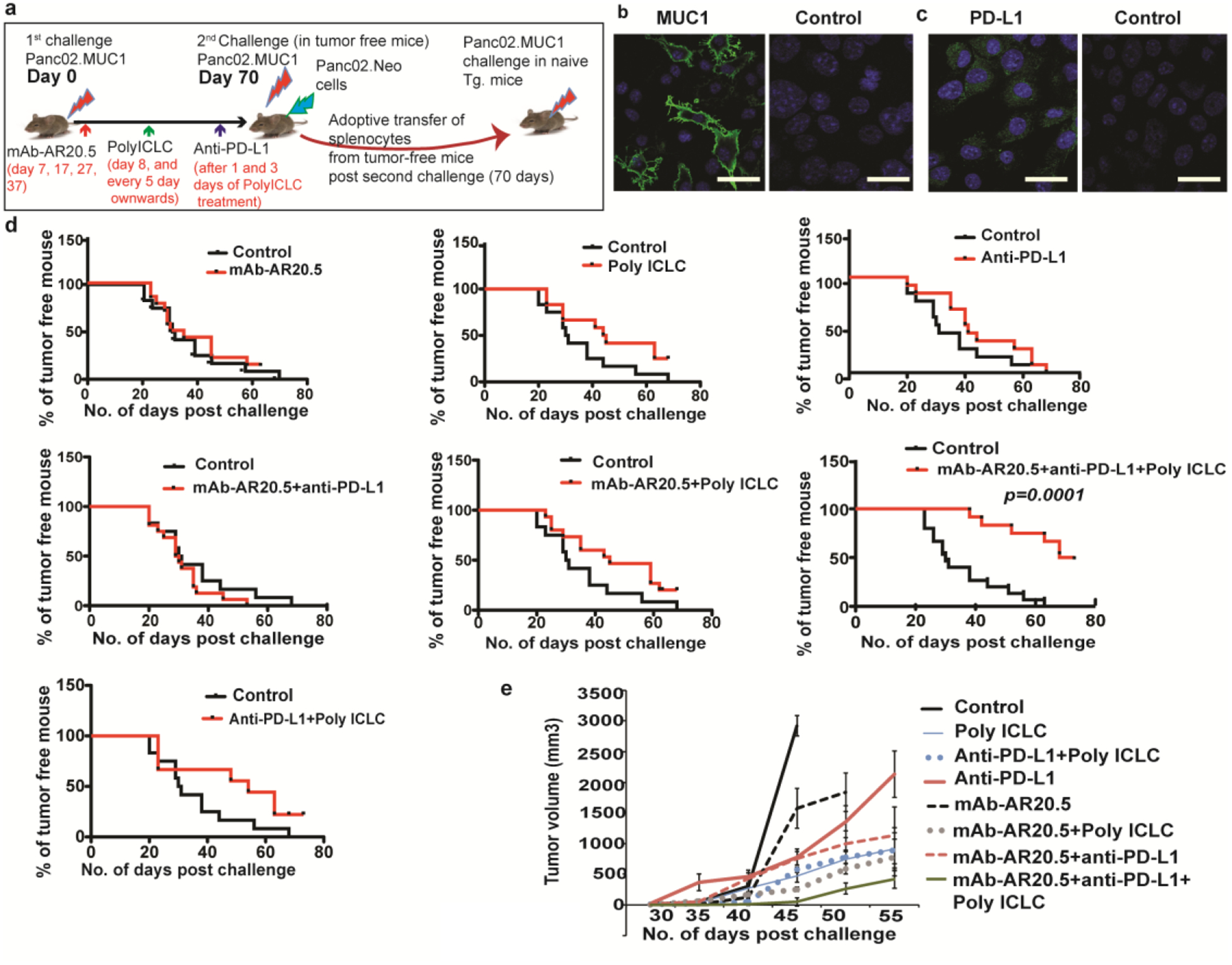Figure 2:

mAb-AR20.5 in combination with anti-PD-L1 and PolyICLC induces rejection of Panc02.MUC1 tumors in MUC1.Tg mice. a Diagrammatic representation of in vivo experimental design for subcutaneous pancreatic tumor challenge in MUC1.Tg mice. b-c Representative images show immunofluorescence staining for human MUC1 (green), nucleus (blue) (b) and PD-L1 (green) (c) in Panc02.MUC1 tumor cells. d Time-to-tumor progression for different combination treatment groups receiving mAb-AR20.5, anti-PD-L1 and PolyICLC in MUC1.Tg mice. e Tumor growth curves for mice treated with different combinations of mAb-AR20.5, anti-PD-L1 and PolyICLC post Panc02.MUC1 tumor cell implantation in MUC1.Tg mice. The results shown are representative of three independent studies, p=0.0001; mAb-AR20.5 based combination vs. saline control. Representative experiments were repeated thrice, (n=6/gp), p=0.0001; mAb-AR20.5 based combination vs. saline control, log-rank test (TTP curves). The mixed effects model with random mice effects was used to compare the tumor growth over time between groups after accounting for the correlation among the measurements on the same mice.
